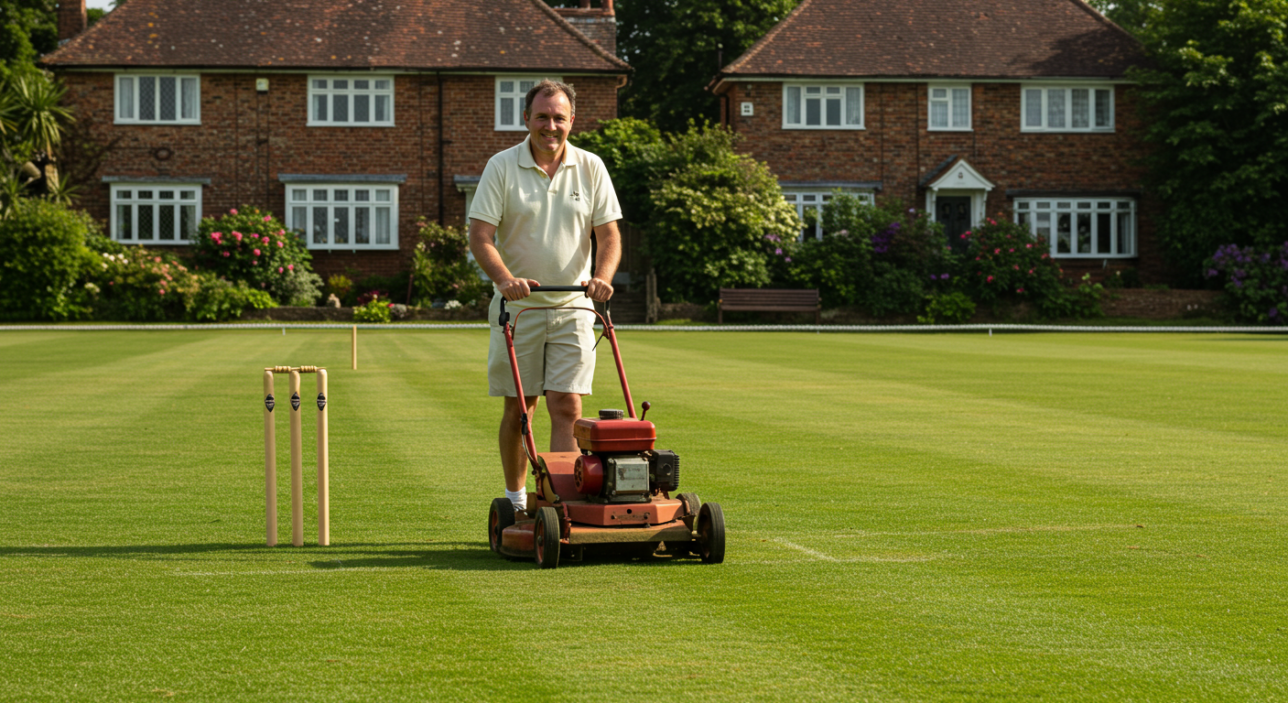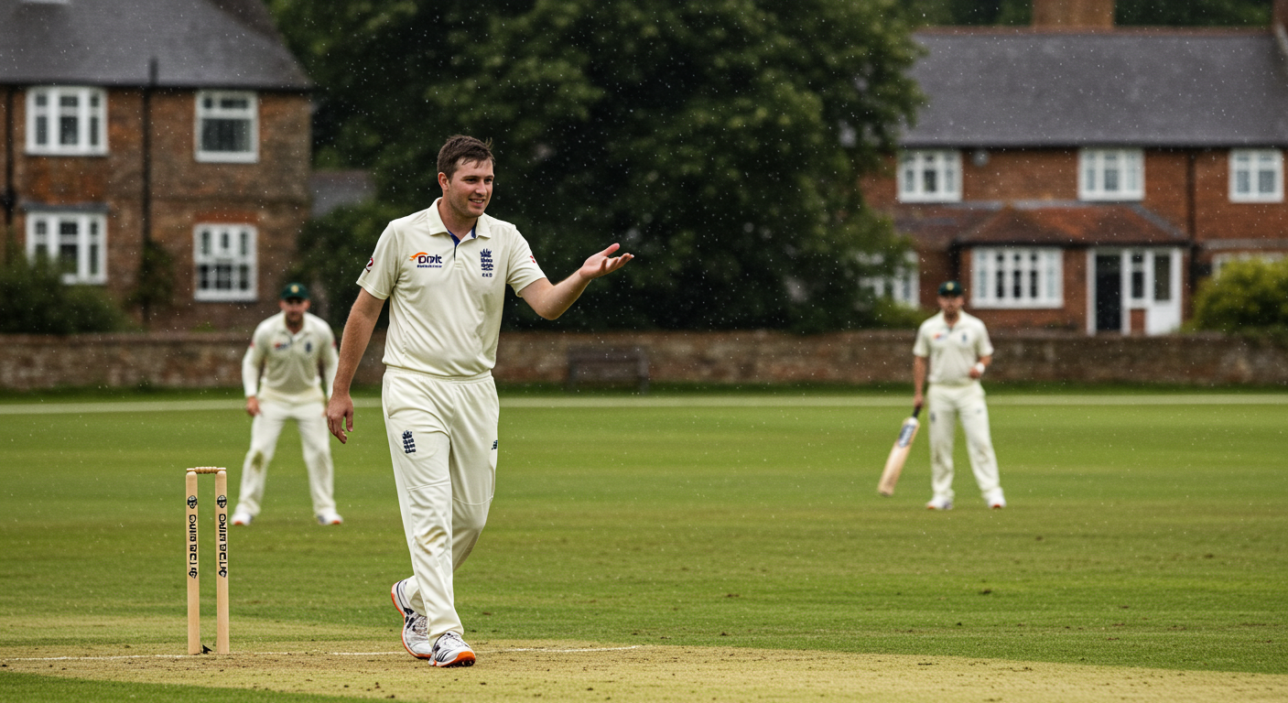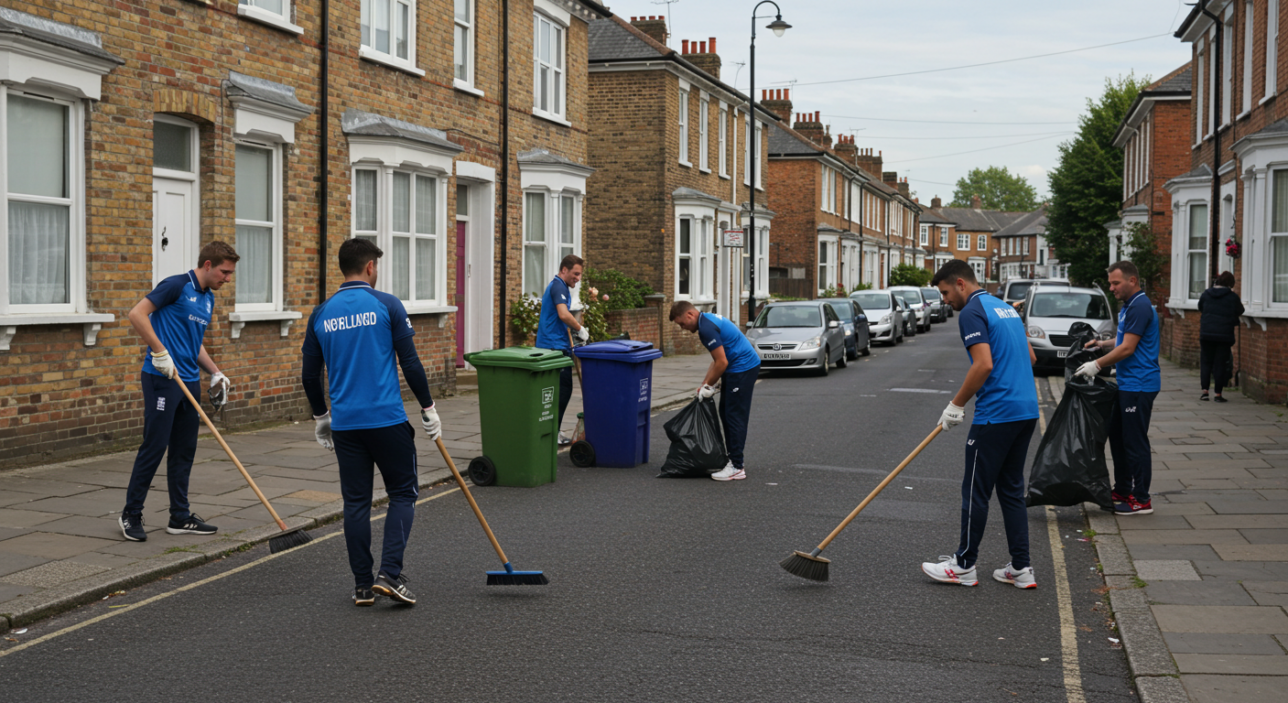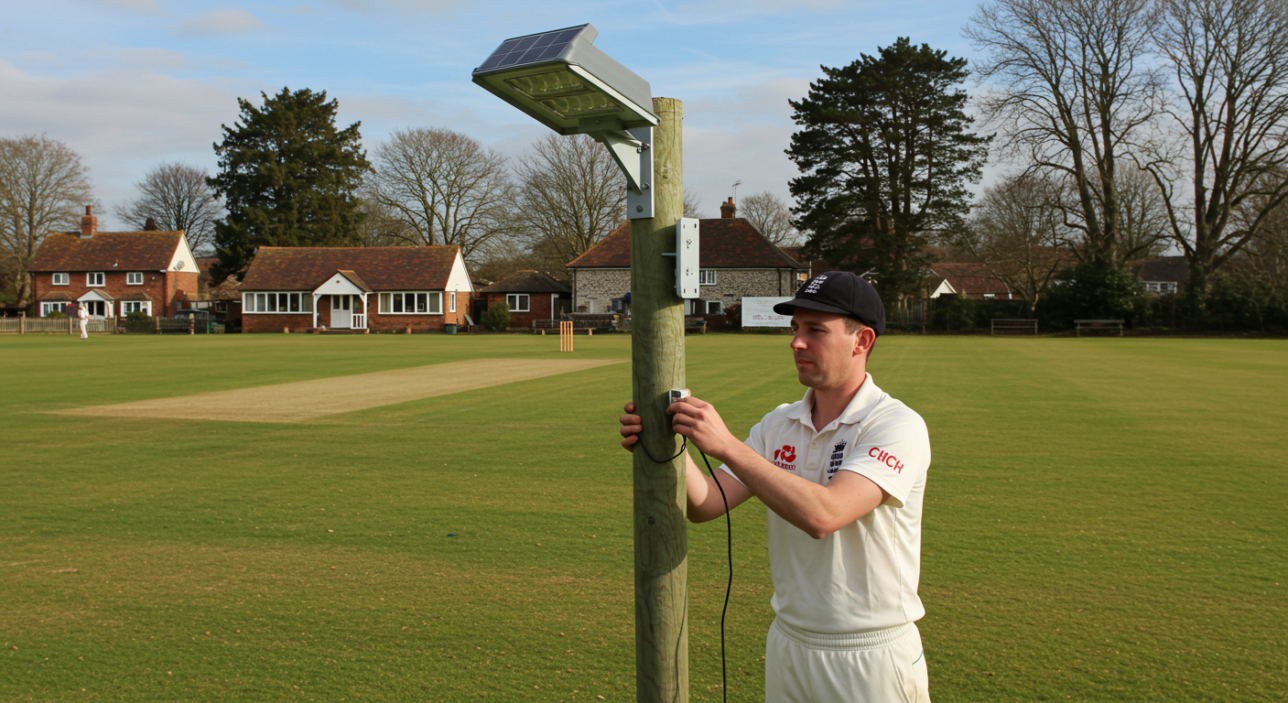
The Challenges of Maintaining a Village Cricket Ground
Maintaining a village cricket ground is a job that few players think about until something goes wrong. Yet without constant care and attention, pitches deteriorate, outfields become unplayable, and clubs struggle to keep fixtures alive. Behind every Saturday afternoon match lies months of quiet, often invisible, work.
Ground maintenance is far from glamorous. It involves heavy lifting, early mornings, frustrating equipment failures, and endless negotiations with the weather. Most clubs rely on a handful of volunteers to handle everything from mowing and rolling to repairing sightscreens and chasing down council support for basic facilities.
A village cricket ground is not simply a patch of grass with some stumps in the middle. It is a living space that needs managing throughout the year, not just in the summer months. Without proper maintenance, the ground quickly becomes uneven, unsafe, and unfit for play, damaging not just club morale but community spirit as well.
This article explores the practical challenges of maintaining a village cricket ground. It is a real look at the effort required to prepare, protect, and sustain a playing surface week after week, season after season. No exaggeration, no fiction — just the honest reality of what it takes to keep the heart of village cricket beating.
1. Preparing the Pitch Week After Week

One of the biggest tasks in maintaining a village cricket ground is preparing the playing surface for matches. This is not a one-off job. It requires continuous weekly effort from the start of the season in April through to the final overs of September.
Pitch preparation begins with mowing. The square needs to be cut regularly and at a specific height to ensure an even, playable surface. Many clubs mow their squares two to three times a week during peak season, adjusting the cut height depending on weather conditions. Using an ageing mower with frequent mechanical problems adds an extra layer of difficulty.
Rolling is another essential part of preparation. Regular rolling helps create a firm, true surface. It is a slow and often tedious job, particularly when the ground is soft after rain. Clubs without a powered roller rely on heavy manual rollers, requiring physical effort and careful timing to avoid damaging the turf.
Marking out the creases with fresh white lines must be done before every game. It sounds simple but requires precision, especially if the previous week’s markings have faded. Poorly marked pitches can cause disputes during matches and lead to complaints from visiting teams.
Preparing a pitch correctly demands attention to detail and an investment of time. Without consistent mowing, rolling, and marking, maintaining a village cricket ground becomes impossible. Regular maintenance is the difference between a match played in good spirits and a frustrating afternoon battling a rough, unpredictable surface.
2. Managing the Outfield and Keeping It Playable
While much attention goes to the square, maintaining the outfield is just as important in keeping a village cricket ground functional and enjoyable. A rough or poorly maintained outfield not only frustrates players but also increases the risk of injuries.
Regular mowing is essential during the summer months. Ideally, the grass should be kept short enough to allow the ball to travel smoothly but long enough to protect the surface from damage in dry spells. For many clubs, this balancing act depends on unreliable second-hand mowers and the availability of volunteers willing to spend hours in the sun.
Weed control is another major challenge. Without careful management, outfields quickly fill with clover, dandelions, and other stubborn growths that slow down play and spoil the appearance of the ground. Some clubs invest in seasonal treatments, but many rely simply on regular mowing and selective spot weeding to stay on top.
Uneven surfaces also cause problems. Holes dug by rabbits, ruts left by winter waterlogging, and general wear and tear all need constant attention. At the start and end of each season, many clubs organise working parties to fill, roll, and reseed damaged areas, hoping to restore a safe and pleasant playing field.
Maintaining a village cricket ground involves far more than just the wicket. A smooth, level outfield transforms the playing experience. It rewards good shots, encourages confident fielding, and makes the entire match feel more professional. Outfield care may not always get noticed, but when it is neglected, it is impossible to ignore.
3. Dealing with Weather Challenges All Year Round

The British weather is one of the greatest obstacles in maintaining a village cricket ground. Rain, drought, frost, and high winds all have the power to undo months of careful preparation in a matter of hours.
Heavy rain can waterlog outfields and squares, making them unsafe and forcing match cancellations. Drainage is a major concern for most clubs, but installing proper systems is expensive and often out of reach. Instead, clubs rely on surface drainage, quick work with squeegees and sponges, and plenty of crossed fingers.
Extended dry spells bring a different set of problems. Pitches crack, outfields brown off, and grass growth slows dramatically. Without irrigation systems, which most village clubs cannot afford, volunteers have to drag out hoses and sprinklers by hand, sometimes late into the evening after work.
Wind damage is another seasonal hazard. Sight screens blow over and break, covers are torn free, and debris litters the square. Storm repairs stretch already thin volunteer resources and can eat into limited club budgets when replacements are needed.
Maintaining a village cricket ground demands adaptability. Groundsmen and players alike must respond to changing conditions with creativity and persistence. Whether battling standing water or nursing sun-baked grass back to life, dealing with the weather is an unavoidable and exhausting part of the job. Success is measured not by perfection, but by getting enough matches played through another unpredictable season.
4. Maintaining Equipment and Facilities on a Tight Budget
Maintaining a village cricket ground is not just about the grass. The machinery and facilities that support the ground need just as much care, and often they are as old as the club itself. Keeping everything running is one of the most time-consuming and expensive parts of running a club.
Mowers, rollers, strimmers, and line markers are essential pieces of equipment. Most clubs use second-hand or donated machines, and breakdowns are common. Replacing parts, sourcing repairs, and improvising quick fixes are all regular tasks for club volunteers. A mechanical failure in mid-season can lead to postponed matches if grass grows unchecked or if the square cannot be properly rolled.
Pavilions, changing rooms, scoreboxes and sightscreens also demand attention. Roof leaks, broken windows, and wear from winter weather must be repaired before the season starts. Many clubs operate on tight budgets and rely heavily on volunteer labour for maintenance and small upgrades.
Fundraising events, small grants, and local sponsorships are essential to cover the costs of maintenance and replacement. Clubs that fall behind with equipment upkeep find that it impacts the quality of play and the safety of players very quickly.
Maintaining a village cricket ground is a continuous balancing act between needs and available resources. Clubs that thrive often do so not because they have the best facilities, but because they have committed volunteers who refuse to let ageing equipment or stretched finances stop the season from going ahead.
5. Volunteer Shortages and the Strain on Regular Helpers

One of the hardest challenges in maintaining a village cricket ground is simply finding enough willing hands. Most clubs rely on a small core of dedicated volunteers to keep everything running, but over time, the same few individuals can become overstretched and exhausted.
Preparing a ground week after week takes hours of unpaid work. Rolling the square, cutting the outfield, marking lines, setting up sightscreens, repairing machinery, cleaning pavilions, organising teas — all of this needs doing, often on weekday evenings or early weekend mornings.
The reality is that many players only see the end product and do not realise the scale of effort behind it. Volunteer fatigue is common, especially when the workload falls disproportionately on older members who have been doing it for decades.
Some clubs try to spread the load by creating ground duty rotas, encouraging every player to contribute during the season. Others offer small incentives, like free match fees or drinks vouchers, but participation still varies. Clubs that build a strong culture of helping out are better placed to survive long-term.
Maintaining a village cricket ground is about more than the grass and the pitch. It is about fostering a sense of responsibility among all members. Without fresh volunteers coming through, even the best-kept grounds can start to suffer, putting the future of the club at risk.
6. Protecting the Ground During the Off-season
Maintaining a village cricket ground does not end when the last match of the season is played. Protecting the ground during autumn and winter is essential if the playing surface is to survive the off-season and be ready again for the following spring.
The square must be carefully managed after the final match. End-of-season renovations often include scarifying the surface to remove dead grass and thatch, overseeding to encourage healthy new growth, and applying top-dressing to level out any minor imperfections. Timing is critical. These jobs must be completed before the first frosts to give the grass time to establish.
Covers and equipment need storing properly to avoid winter damage. Sightscreens, nets, and benches are packed away or secured against strong winds. Machinery must be cleaned, serviced, and stored indoors if possible to prevent rust and deterioration.
Clubs with limited budgets cannot afford to neglect winter work. Waterlogging, frost heave, and animal damage can undo an entire summer’s worth of effort if precautions are not taken. Inspections through winter, even if only once a month, help catch small problems early.
Maintaining a village cricket ground is a year-round task. Summer matches are only possible because of careful winter protection, and clubs that plan ahead find themselves with a major advantage when pre-season preparations begin again.
7. Adapting to Modern Expectations and Standards

Modern expectations for cricket facilities have increased, and maintaining a village cricket ground today often means meeting higher standards than in previous decades. Health and safety, access requirements, and broader community use have added layers of complexity to traditional ground maintenance.
Playing surfaces must be safe and consistent. Poorly maintained grounds can lead to injuries and complaints from opposition teams, umpires, and league organisers. In some regions, minimum facility standards are now a requirement for participation in structured competitions.
Many clubs have invested in improved covers, upgraded net facilities, and better drainage systems to keep up. Others have sought grants to install energy-efficient lighting, water storage tanks, and inclusive changing facilities to meet the needs of female players and juniors.
Maintaining a village cricket ground today involves more planning and paperwork than ever before. Risk assessments, funding applications, insurance policies, and facility audits are becoming a normal part of club management.
Adapting to these demands is not always easy, especially for small clubs with limited manpower and finances. However, those who embrace change and modernise carefully are more likely to thrive, attract new members, and ensure that village cricket remains a vibrant part of the community for years to come.
Conclusion: The Real Work Behind Maintaining a Village Cricket Ground

Maintaining a village cricket ground is not just about preparing for one Saturday match. It is about safeguarding the future of grassroots cricket. Every hour spent mowing, rolling, weeding, marking, and repairing is an investment in keeping community sport alive.
A village ground is often the heart of its community. It hosts generations of players, brings together families and neighbours, and provides a green space where competition and camaraderie meet. Without constant maintenance, that connection fades, and opportunities for people to enjoy cricket close to home disappear.
The challenges are real. Weather damage, rising costs, volunteer shortages, and increased standards make the task harder than it once was. But the effort remains worth it. Every game played on a smooth, well-kept surface is a reminder of what shared hard work can achieve.
Maintaining a village cricket ground is a responsibility shared across the club. It demands commitment, patience, and a strong sense of community pride. Those who step up to take care of these spaces help preserve a tradition that stretches back centuries and still has a vital role in village life today.
If village cricket is to survive and flourish, then so must the grounds that host it. The work may often go unseen, but its impact is visible in every clean boundary, every sharp turn on the square, and every smiling player walking off the field after a day well spent.





